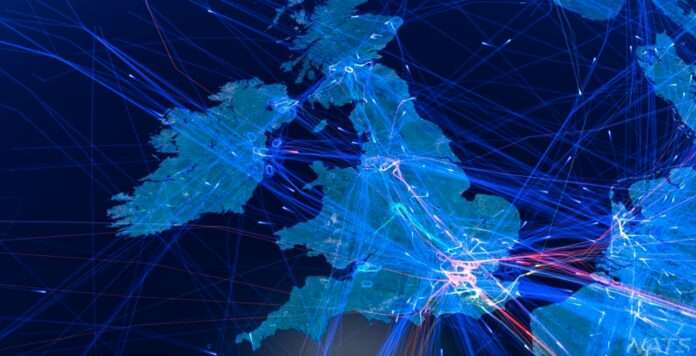In a rare meteorological event, Storm Isha swept across the entirety of the UK and Ireland, leaving its mark with unprecedentedly powerful winds. For Chris Strong, Head of Network Operations at NATS, the challenges posed by this exceptional storm were significant.
The southern regions of England and Ireland experienced winds gusting at 70-75mph, characterized by south-westerly directions. This not only resulted in crosswinds at major airports in the south but also introduced wind shear and turbulence, adding extra layers of complexity for flight crews.
Meanwhile, in the north of the country, the winds were even more fierce, with gusts exceeding 90mph. These extreme conditions wreaked havoc not only in aviation but also across the entire transport infrastructure.
One of the most critical challenges faced by the aviation industry during the storm was ensuring the safe landing of aircraft. To achieve this, it became necessary to increase the separation between aircraft, effectively limiting the number of planes allowed into the airspace simultaneously.
This reduction in arrivals created a cascade of challenges. Aircraft executing go-arounds, where they abort their landing due to suboptimal conditions, had to be carefully repositioned into the landing sequence. For those planes unable to land safely, diversions to alternative airfields became the only option.
However, due to the widespread impact of Storm Isha, NATS had to alert airlines that their usual diversion airfields might not be available. Airlines were advised to prepare for the possibility of having to divert further afield. As UK airfields began filling up with aircraft unable to depart or diverted, the situation became increasingly complex.
During the storm, more than 100 go-arounds occurred at airports across the country, and the total number of diversions is still being tallied.
To proactively manage the situation, NATS conducted frequent videoconferences with airlines and airports, involving over 100 industry experts. The Met Office, closely integrated into NATS’ operations, provided vital updates on the storm’s progress, wind speeds, gusts, its spread, and the airfields most affected.
Collective planning efforts aimed to minimize disruption as much as possible. Airlines revised their schedules to mitigate disruptions not only for the storm’s duration but also to ensure aircraft were in the right positions for a smooth recovery. Flight crews loaded additional fuel in anticipation of diversions, and some airlines canceled complete rotations to protect schedules.
As the storm subsided and winds diminished, NATS’ operations returned to normal. However, airlines and airports faced the challenge of retrieving aircraft that were out of position and caring for passengers yet to reach their destinations.
The shared objective throughout the storm was to maintain the safety of the entire network and preserve the UK aviation operation as much as possible. Despite the storm’s formidable impact, the concerted efforts of the industry, NATS, and other stakeholders minimized disruptions, ensuring a smoother recovery.
Gatwick Airport reported that 22 flights had to divert due to weather conditions, with an additional 5 flights diverting from other UK airports during the storm, highlighting the widespread challenges faced by the aviation sector.
3 / 3





















